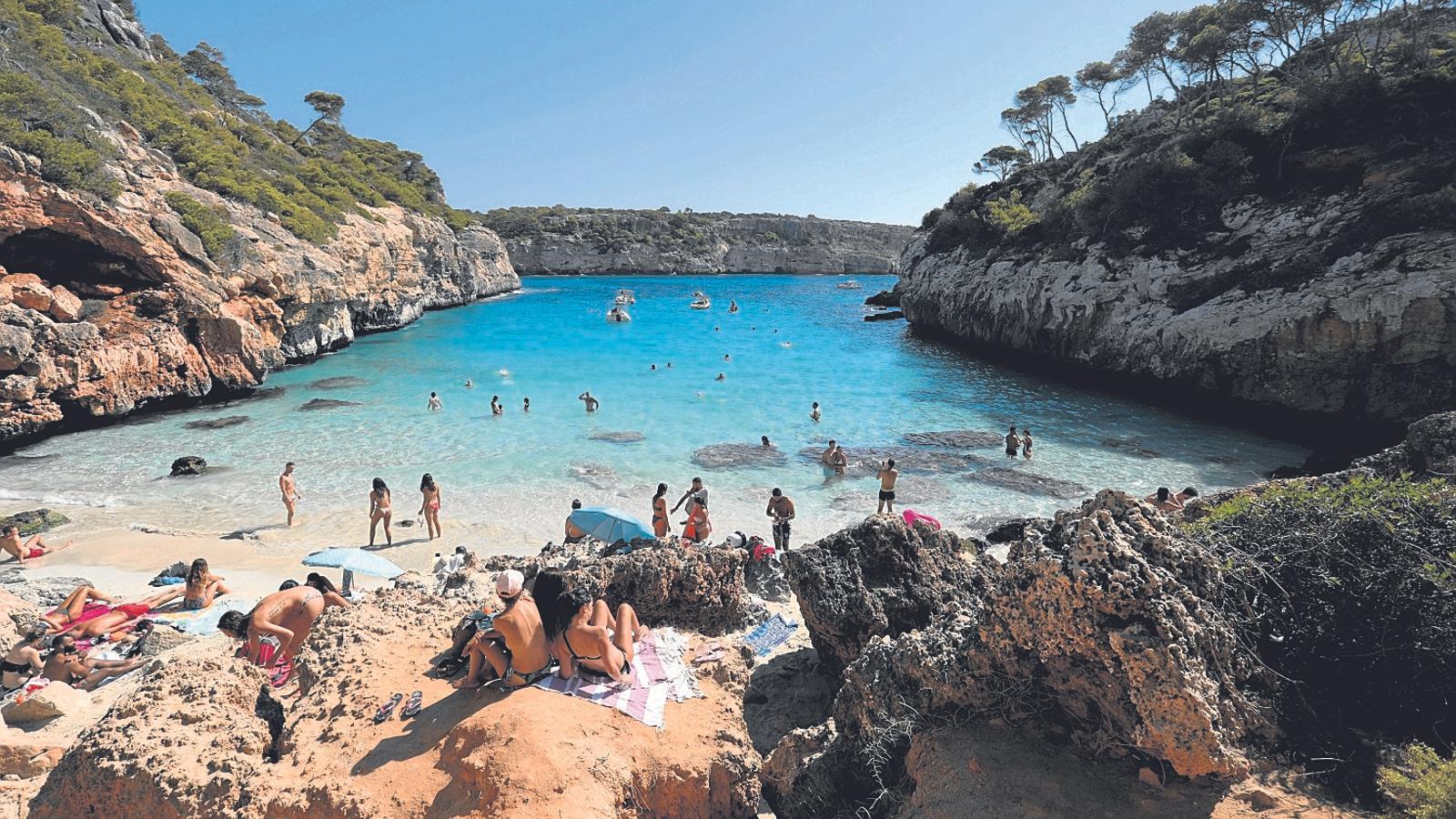Caló del Moro, at its limit: “They didn't even know him in Santanyí, only sailors and smugglers”
Mallorca was not yet so crowded and residents were accustomed to the pristine beaches that are currently not available.


Palm"Empty," replies Francisca Aguiló, a 90-year-old resident of Santanyí, when asked what Caló del Moro was like when she was a doll. Seventy years ago, "no one knew about the cove of Santanyí, which artificial intelligence recently described as the "most beautiful in Mallorca." "In fact, there were many people from Santanyí who didn't even know it existed. It was just another cove," she recalls. When she was very young, she never went there because "it was really hard to go down because there was no path and it was all bushes and pine trees."
They went to closer, more accessible beaches, like Cala Santanyí. Her family had a vegetable garden nearby, and when they finished work, they would go down with her godfather, cousins, and aunts to clean the horse inside Cala Santanyí. "And it was just us," she recalls, laughing, while counting the number of them on her fingers.
When she was older, she used to go boating with a German friend she met in 1964 in Santanyí. But she didn't go out to sea because she was afraid. "I stayed inside the boat and looked at the color of the water. That's why we went. It was spectacular," she says. She still remembers going there once a year from Santanyí "by bicycle, in a wheelbarrow, or on foot," and insists that it was a "desolate" place. "Only the sailors, the anglers, the smugglers knew where they were, and no one else," she says. She explains that they established "maritime signals" to get there, like the castellets (sea towers) found in Caló del Moro and Almunia, which are snail shells made of small rocks packed together.
Juan's godfather, a member of the Lombardos, was a Civil Guard, and his godmother had a brother who was a smuggler. That's why he remembers hearing stories about the smuggling that was practiced years ago on the coast of Santanyí. "A Lombardo who died said they had to carry 50-kilo sacks, they couldn't let go of them, and they had to get from Almunia or Caló to the Lombardos." He also explains that the mother of a friend of his "was about to give birth in the middle of Almunia while smuggling."
On the road that separates Almunia from Caló, there were farmers who farmed the land, but they stopped planting it because "it was too close to the sea and it wasn't good," Aguiló says. At that time, there was still "no road" between the two coves, but there were "a lot of bushes" and "many pine trees." Joan Vidal, a 47-year-old resident of Santanyí, remembers going down to the cove and scratching his legs on the clumps of dry grass scattered along the path. He used to go there when he was very young to do trempó with his family. "We would go down once every summer, on any given day, to eat trempó with the family. It was like a tradition. There was no one there. So few people went that it was rare to bump into another family. You felt like Caló was yours. It was another unspoiled space in Mallorca," he says.
When he was 20, he remembers Caló as a kind of secret place where he would party. "I went only occasionally because it wasn't very comfortable and, besides, there weren't many people. With friends, we would go to other beaches where there were more, to meet new people," he recalls. However, as the years passed, the name Caló del Moro began to be heard among residents and visitors. Juan admits that the local residents were "jealous" of him. If someone asked them where the Caló was, they always tried to convince them to go to Cala Llombards. "It was our spot. We went there practically every afternoon to relax because it was often shady and people who wanted to sunbathe would leave while we stayed there. When I was about 17, we even moved signs indicating where the Almunia was to throw visitors off the scent," he confesses.
With the arrival of mass tourism and the birth of social media, where a lot of promotion of the Caló del Moro has been and continues to be, removing a sign is no longer enough. According to the latest data from the Santanyí City Council, in June 2024 this cove "suffered the daily pressure of more than 4,000 people and 1,200 cars."
Call-to-cut effect
The Santanyí council emphasizes that "social media is the main attraction and generates a call-to-cut effect." For his part, Aguiló considers the overcrowding caused by uploading a photo of this space on social media to be an "aberration." He also regrets the "so much propaganda" that has been created.
Residents didn't prioritize Caló del Moro over other beaches because they used to have "a lot to choose from," says Aguiló. "Cala Figuera and Cala Santanyí were empty, and there were more," he recalls. However, Caló has gone from being a place that "never used to be the first choice to go to," Vidal says, to being a cove where residents no longer go, not because there are still more empty, unspoiled spaces to choose from, but because there's no room. "We didn't realize we wouldn't be able to return until we couldn't go anymore," laments Vidal, who hasn't set foot in 17 years.
